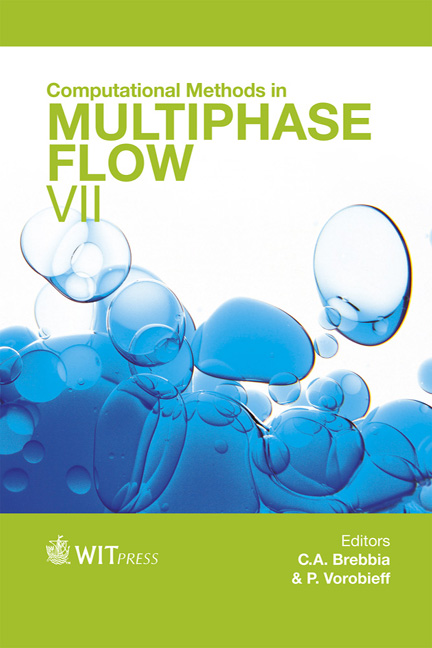Study On Water Flow Field Around A Stationary Air Bubble Attached At The Top Wall Of A Circular Pipe
Price
Free (open access)
Transaction
Volume
79
Pages
14
Page Range
323 - 336
Published
2013
Size
1,327 kb
Paper DOI
10.2495/MPF130271
Copyright
WIT Press
Author(s)
C. Lin, C. H. Lu, J. Yang & T. Liu
Abstract
The presence of bubbles in a pipeline is thought to be one of the reasons to cause the hydraulic-electrical and hydraulic-mechanical facility systems to lose their efficiency. From previous research, the bubble also reduces the effective pipe cross section, which results in a reduction in pipe capacity. The efficiency and service life of pumps and turbines are reduced and shortened consequently. It may even create the interruption of the flow field within blowout phenomenon. As a result, the presence of a bubble in the pipeline is anticipated to create potential hazards. Therefore, it is very interesting to make clear the corresponding variation of a water flow field around a stationary air bubble attached at the top inner-wall of pipe due to the surface problems in contact mechanism of these three phases among the solid wall of pipe, stationary air bubble, and ambient water flow. This study applied flow visualization techniques and high time-resolved PIV to investigate the characteristics of a flow field around a stationary bubble in a fully-developed horizontal pipe flow. Experiments were carried out in a pipe having a constant inner diameter of 9.60 cm and a length of 260.0 cm, yet varied with different bubble volumes (or lengths). Two settling water chambers with different still water levels were connected to both ends of the circular pipe. Titanium dioxide powder being uniformly dispersed in the pipe flow was used as a tracer both for flow visualization tests and for PIV measurements. The results show that a horseshoe vortex and reverse flow at the upstream and downstream of the bubble respectively are commonly seen in all test cases. The experimental results also show that the shape and volume of a bubble highly
Keywords
air pocket, particle image velocimetry, shear layer, slippery motion, characteristic length (or velocity) scale





